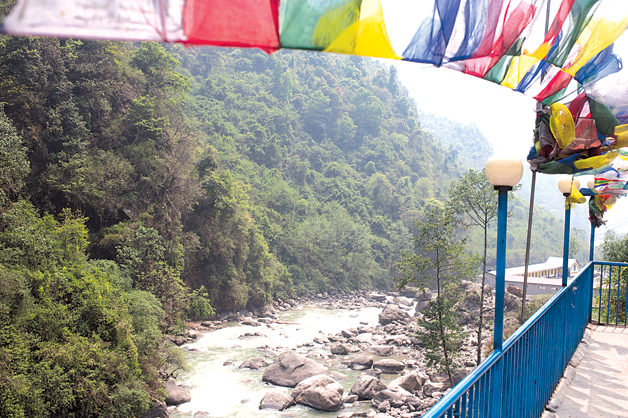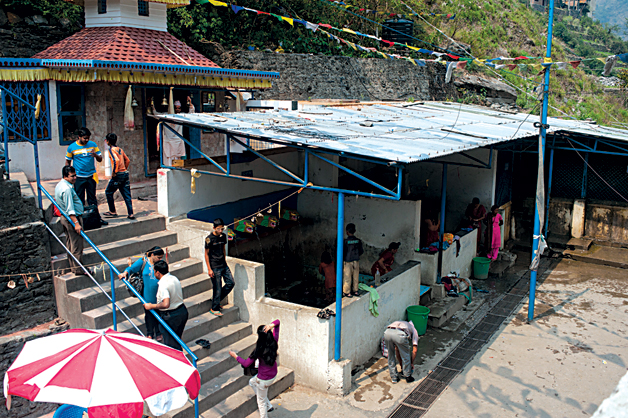
Bubbling water in large tranquil rock pools, ala Japanese hot springs, is not what to expect when visiting Tatopani. However, the spot remains popular amongst local Nepalis seeking a refreshing bath in the scalding waters, said to contain medicinal and healing powers.
Tatopani sits about 5 km south of Kodari, on the border of Nepal and Tibet (China). Getting there from Kathmandu can be a challenging experience for the faint hearted, as public buses are usually packed with locals headed for the Tibet border town seeking cheaply made Chinese goods. Often, the only seats available are on the roof, which makes for a thrilling, or unsafe ride depending on your disposition.
Hot springs are coveted for the high mineral content in the water, which offers a variety of well-documented healing effects.
Standout benefits include blood purification through the elimination of toxins in the body and reactivation of delayed metabolism in those suffering from Rheumatism. The hot water also acts as a muscle relaxant for stiffness and rehabilitation.
Tectonic movements deep below the earth’s surface are responsible for the geothermal energy that forms hot springs such as Tatopani. Underground sources of water coming into contact with the heated rocks warm significantly and rise up, sometimes reaching boiling point in areas with volcanic activity.
Tatopani’s water, whose temperature borders on the mildly uncomfortable, is stored underneath and released in controlled amounts at various points around the compound.
Tourists frequented Tatopani up until the 1980s, which offered a peek into the then-closed borders of Tibet. Today, it seems to be mostly locals visiting, piling into the once-hourly bus that runs the route between Kathmandu and Tatopani.
As with many attractions in Nepal, the two-tiered price guide charges tourists significantly higher for entry and access to the few facilities that the hot springs has to offer.
The most basic itinerary would involve forking out Rs. 20 for the entry fee, inclusive of a shower in the common area. Separated by a low concrete partition are the male and female showers, where sprightly colored lion heads spout the spring water between their fanged teeth.
A word of caution: despite Nepal’s conservative trappings, it’s not uncommon to witness gratuitous displays of female nudity, mostly amongst the older women who occasionally stray inadvertantly into the male showers.

The few other options besides a basic shower is the swimming pool, populated by little children who take turns to do back flips into the murky waters, soaking in bathtubs, or a relaxing recline in the sauna rooms.
While it may seem natural to luxuriate in the hot water, be careful not to expose your body to the water for more than 15 minutes at a time, and keep warm under a towel immediately after to avoid falling ill from an extreme change in temperature.
The other attraction of Tatopani is undoubtedly the stunning views of the Bhote Koshi, or Tibet River, running down from China and flanked by steep hills decked out in lush vegetation.
Farther down the river are several resorts offering adventure sports, like the popular The Last Resort or Borderland Resort, which make a good stopover point on the way to Tatopani.
So, the next time the Kathmandu smog starts crushing your spirits, consider a day retreat to northern Nepal to rejuvenate your senses under the hot springs of Tatopani.











